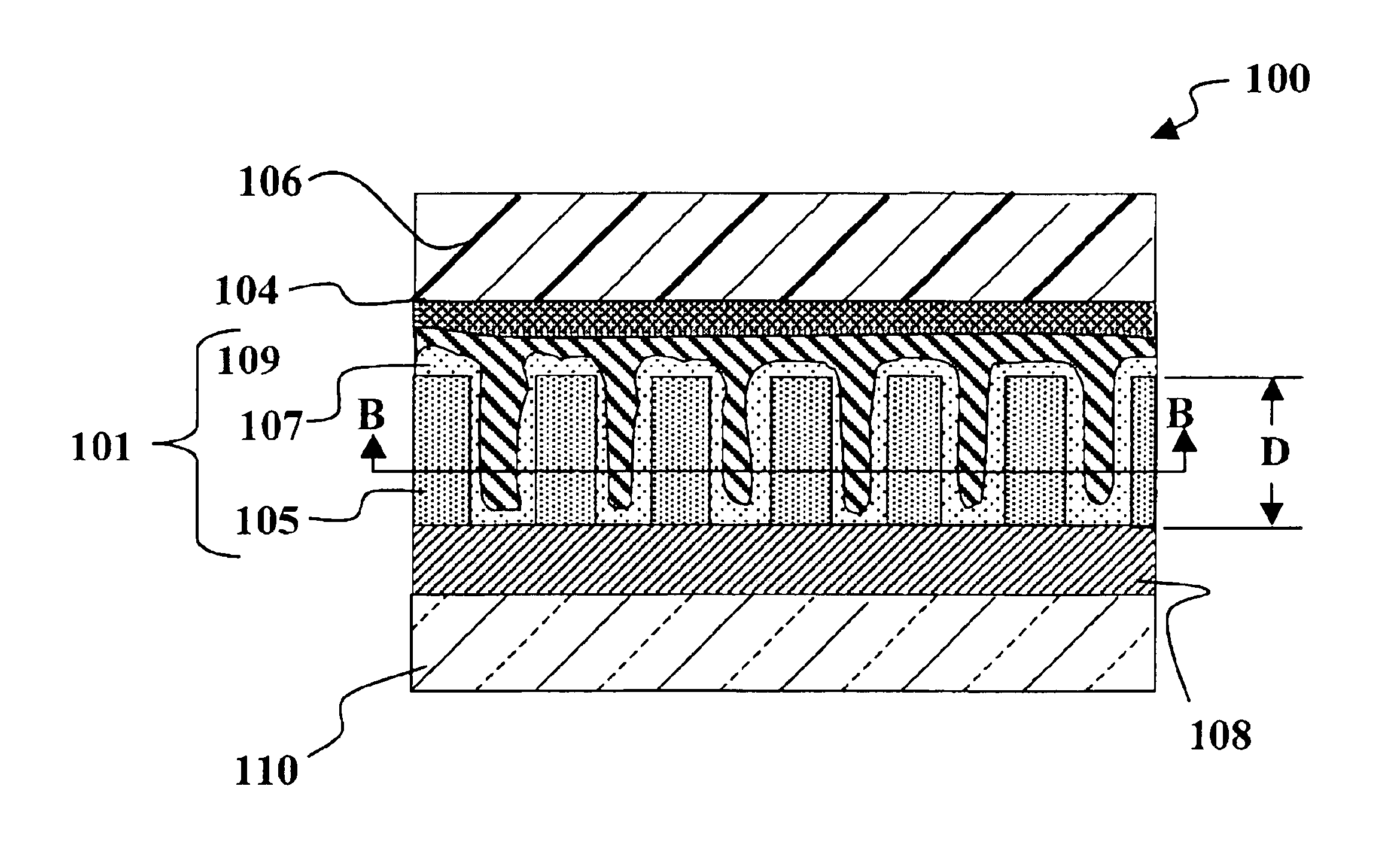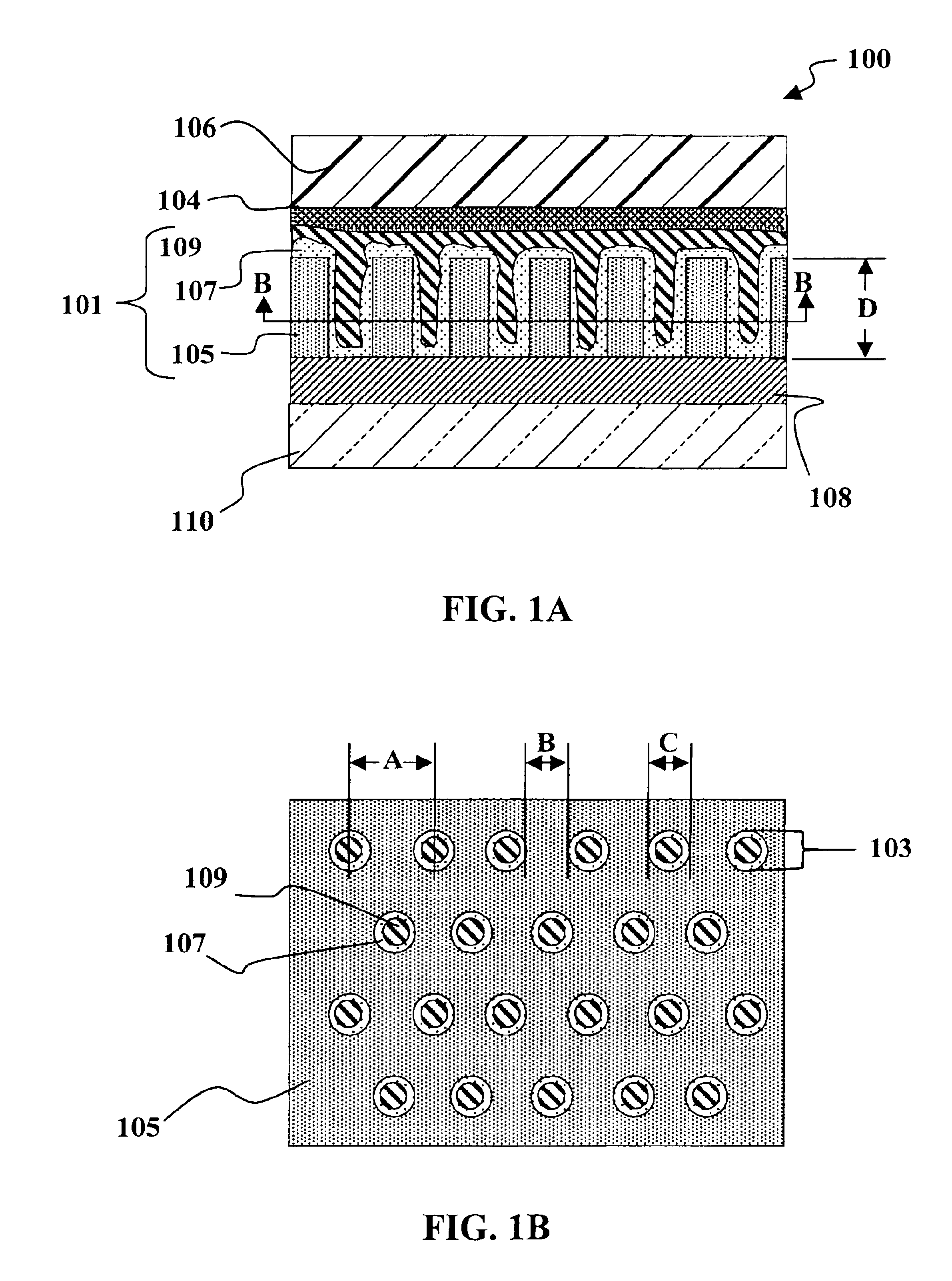Photovoltaic devices fabricated by growth from porous template
a technology of photovoltaic devices and porous templates, applied in thermoelectric devices, sustainable manufacturing/processing, final product manufacturing, etc., can solve the problems of reducing the hole and electron transport efficiency, interim recombination loss, and uncontrollable active layer morphology
- Summary
- Abstract
- Description
- Claims
- Application Information
AI Technical Summary
Benefits of technology
Problems solved by technology
Method used
Image
Examples
Embodiment Construction
Contents
[0024]I. Glossary[0025]II. Introduction[0026]III. General Overview[0027]IV. Photovoltaic Device[0028]V. Photovoltaic Device Fabrication[0029]VI. Alternative Embodiments[0030]VII. Conclusion
I. Glossary
[0031]The following terms are intended to have the following general meanings as they are used herein:
[0032]The article “A”, or “An” refers to a quantity of one or more of the item following the article, except where expressly stated otherwise, e.g., “a single” layer.
[0033]Active Layer generally refers to the layer within a photovoltaic or solar cell device where conversion of radiant energy to electrical energy takes place.
[0034]Anodization refers to the formation of a film, such as an oxide, on a conducting material, such as a metal, by electrolysis.
[0035]Array refers to a regular arrangement of objects or structures over a scale of distance greater than some characteristic dimension of a typical structure or object in the array.
[0036]Aspect Ratio: refers to the ratio of pore ...
PUM
| Property | Measurement | Unit |
|---|---|---|
| distances | aaaaa | aaaaa |
| distances | aaaaa | aaaaa |
| diameter | aaaaa | aaaaa |
Abstract
Description
Claims
Application Information
 Login to View More
Login to View More - R&D
- Intellectual Property
- Life Sciences
- Materials
- Tech Scout
- Unparalleled Data Quality
- Higher Quality Content
- 60% Fewer Hallucinations
Browse by: Latest US Patents, China's latest patents, Technical Efficacy Thesaurus, Application Domain, Technology Topic, Popular Technical Reports.
© 2025 PatSnap. All rights reserved.Legal|Privacy policy|Modern Slavery Act Transparency Statement|Sitemap|About US| Contact US: help@patsnap.com



